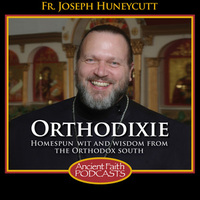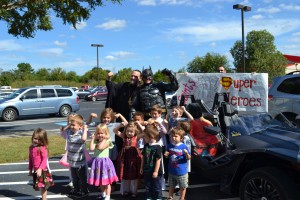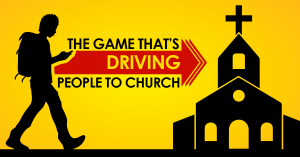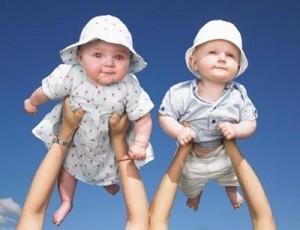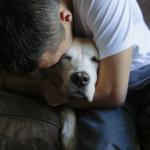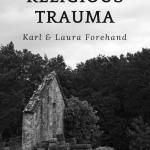Ancient faith gains believers from decidedly more modern churches
April 22, 2005 – ROBIN GALIANO RUSSELL / Special Contributor to The Dallas Morning News![]()
The Eastern Orthodox Church, as far removed from a nondenominational or evangelical congregation as you can get, is nevertheless attracting a growing number of converts who are drawn by the tug of an ancient faith.
Converts are trading in their PowerPoint sermons and praise bands for the ancient rhythms of a liturgy that hasn’t changed in thousands of years – a pendulum swing from the casual, seeker-friendly services that have dominated contemporary evangelicalism.
Their numbers are still small compared to megachurch growth patterns, with 1.2 million Eastern Orthodox Christians in America and an estimated 10,000 in the Dallas area. But adherents say there’s been a surge in people drawn to the faith.
The Antiochian Orthodox Church, the most evangelistic of the American Orthodox churches, has tracked conversions for several decades. The number of its churches in the U.S. has doubled in 20 years to more than 250 parishes and missions. About 80 percent of its converts come from evangelical and charismatic backgrounds, 20 percent from mainline denominations.
Many go on to become Orthodox priests. About 78 percent of clergy in the Antiochian Church are converts, up from 10 to 15 percent 25 years ago. Nearly half of the students in America’s two largest Orthodox seminaries are converts.
Those who convert say they are drawn to an aesthetic beauty and spiritual mystery in Orthodox worship that are often lacking in their own Protestant services. It’s like entering a time machine that allows congregants to worship as the early Christians did.
Not that it doesn’t take some getting used to.
Orthodox services are based on the Divine Liturgy of St. John Chrysostom, which can last two hours or more. Congregants stand much of the time, while priests in vestments offer incense and chant the Psalms.
‘Startlingly different’
Frederica Mathewes-Green, a former Episcopalian and author of Facing East: A Pilgrim’s Journey into the Mysteries of Orthodoxy, said the experience of Orthodoxy was “startlingly different” from anything she’d known in Western churches. But it clicked when she saw it was directed toward God rather than her own emotional needs.
“It called us to fall on our faces before God in worship and to be filled with awe at his glory. I could never go back. I now find Western worship tedious and sentimental. To me, the contrast is jolting.”
Ms. Mathewes-Green also prefers the Orthodox view of the Christian life as a healing process and a journey, rather than a one-time “sinner’s prayer.” She and her husband converted from a liberal Episcopal Church in 1993 and helped found an Orthodox church made up mostly of American converts.
“It’s not about getting the sin-debt paid, the ticket punched and now you wait around to die and go to heaven. Orthodoxy is a transforming journey where every day the Christian is being enabled to bear more of God’s light. That’s exciting,” she said.
Stan Shinn of Wylie, who was raised in the Assemblies of God denomination and attended Oral Roberts University, recalls feeling nearly overwhelmed when he stepped inside Holy Trinity Greek Orthodox Church in North Dallas for the first time.
What looked good on paper – definitive answers to his search for early Christian worship and doctrine – had taken him to a “very bizarre and strange” church with icon-filled walls, heavy incense and Byzantine chanting.
“I felt like there was a gauntlet thrown down in front of me,” he said.
He and his wife, Janine, and their three children converted in 2002 from their nondenominational church to the Eastern Orthodox Church.
Like the Shinns, those who convert are joining 350 million Orthodox Christians around the world.
First-century church
“Orthodox” means “right belief.” The Orthodox Church traces its origins back to Jesus’ apostles and first-century practice. The Roman Catholic Church makes that same claim, but the two branches of ancient Christianity differ in ecclesiastical hierarchy and a few doctrinal points.
Roman Catholics believe the pope has ultimate authority, while Orthodox Christians say their council of bishops is more in line with Scripture and church tradition. (The early church had five centers of Christianity – in Antioch, Alexandria, Jerusalem, Rome and Constantinople, which is now Istanbul.)
Orthodox Christians also disagree with the Catholic doctrine of the Immaculate Conception of Mary, which states that Jesus’ mother was born without sin herself.
The two branches of ancient Christianity split in 1054.
Today, the Orthodox community is led by patriarchs and a hierarchy of bishops who must be celibate. Unlike Catholic clergy, Orthodox priests can marry before ordination.
Archbishop Dmitri, 81, leads the Archdiocese of Dallas and the South for the Orthodox Church in America. He grew up as Robert Royster in a Southern Baptist family in Teague, Texas, but converted to Orthodoxy as a teen because he wanted more out of faith.
“Everything was true, but it was not complete. It wasn’t that I needed to repudiate it. I just went on to find the rest of it,” he said.
The Orthodox consider themselves to have a bond with other Christians but believe they have a more accurate understanding of the faith. At a recent daylong festival in Dallas about Orthodox Christianity, Archbishop Dimitri encouraged people in other denominations to cling to the elements of the historic faith that their churches uphold, but added an invitation: “If you find there are holes at the bottom and you have to abandon ship, then head for one that’s still afloat,” he said.
In search of history
Conversion to Orthodoxy often begins with an intellectual quest, Mr. Shinn said. He began searching when he saw modern churches abandoning historic Christian tenets, such as the Nicene Creed, and stripping their sanctuaries of any religious symbolism to be more seeker-friendly.
“The elements of Christianity were disappearing before me like the Cheshire Cat in Alice in Wonderland. What kind of Christianity would my grandchildren inherit, and would the Gospel even be recognizable?” he said.
Studying church history and tradition raised even more questions: Why was the Apocrypha a part of Scripture until the Reformation? Did the early church really have bishops instead of the congregational rule that governs most Protestant churches? Why did they have such a high view of Communion and baptize infants?
And the ancient liturgies, chants, incense and sacraments used in Orthodox services, he discovered, were not taken from medieval Catholicism – as his Protestant upbringing taught him – but from early church worship.
“It all caused me to re-evaluate my core assumptions. Instead of me judging history, I decided I wanted history to judge me and tell me what should I practice,” Mr. Shinn said.
The unchanging nature of the Orthodox Church is a strong draw for “serious Christians” who are tired of Protestant individualism yet disagree with the Catholic Church’s teachings, said the Rev. Peter Gillquist, chairman of missions and evangelism for the Antiochian Orthodox Christian Archdiocese of North America.
“It’s charismatics and evangelicals, those diamonds in the rough who are looking to find Christ’s church. There’s a lot of people who love the Lord and his word, but they’re still looking for his church.”
Father Gillquist was a “card-carrying evangelical” himself before his conversion to Orthodoxy. He attended Dallas Theological Seminary and Wheaton College, and was a director for Campus Crusade for Christ, a nondenominational evangelistic campus organization.
Now he uses evangelistic strategies to promote Christianity and the Orthodox Church. Most who come into the church now are people from other denominations who are confused by the hundreds of Protestant denominations and disturbed by increasing theological liberalism, he said.
Ethnic flavor
But some who are ready to convert still think the church might be too exotic for them, said the Rev. Anthony Savas, pastor of Holy Trinity Greek Orthodox Church in Dallas.
“They’re afraid it’s too ethnic. They wonder, ‘What will my friends think?’ ” he said.
It’s true that the Orthodox Church in America took on the ethnic flavors of 20th-century immigrants. The dozen Orthodox churches in the Dallas-Fort Worth area reflect these geographic and ethnic heritages. Holy Trinity Greek Orthodox Church is Dallas’ largest, with 1,500 active members. The church holds services in Greek and English and hosts an annual Greek festival with ethnic foods, dance and crafts.
St. Seraphim Orthodox Cathedral in the Oak Lawn area is predominantly Russian. At Sts. Constantine and Helen, an Antiochian Orthodox Church, 80 percent of the families speak Arabic. Services at both are in English. There’s a Hispanic congregation in Oak Cliff – Holy Transfiguration Hispanic Orthodox Mission.
Converts become more familiar with the church through catechism classes and the guidance of spiritual godparents (individuals and couples in the congregation who mentor new converts). If they’ve already been baptized in another church, they also must be chrismated, or anointed, to be received in the Orthodox Church.
Americans who convert to Orthodoxy know they will be part of a minority faith. That doesn’t bother Father Savas at Holy Trinity, who grew up Orthodox among Mormons in Salt Lake City.
“It’s wonderful to practice the ancient Christian faith in an environment that doesn’t know what to do with it. A minority can be a beacon of light, like the apostles, who took it beyond their own country,” he said.
“It’s a beautiful eye-opening experience for people to see the church of the New Testament is alive and thriving today. We don’t define ourselves by who we’re not. The church is just here. And we’re here to lift it up.”
Adherents say there is only one Orthodox Church, which is administratively organized into several jurisdictions. The faith, worship and doctrine is the same, but churches differ in language and administration.
Dioceses of Orthodox Churches are administrated by bishops in North America, as well as archbishops and patriarchs abroad.
Thanks for FWD from Fr Victor Potapov.


